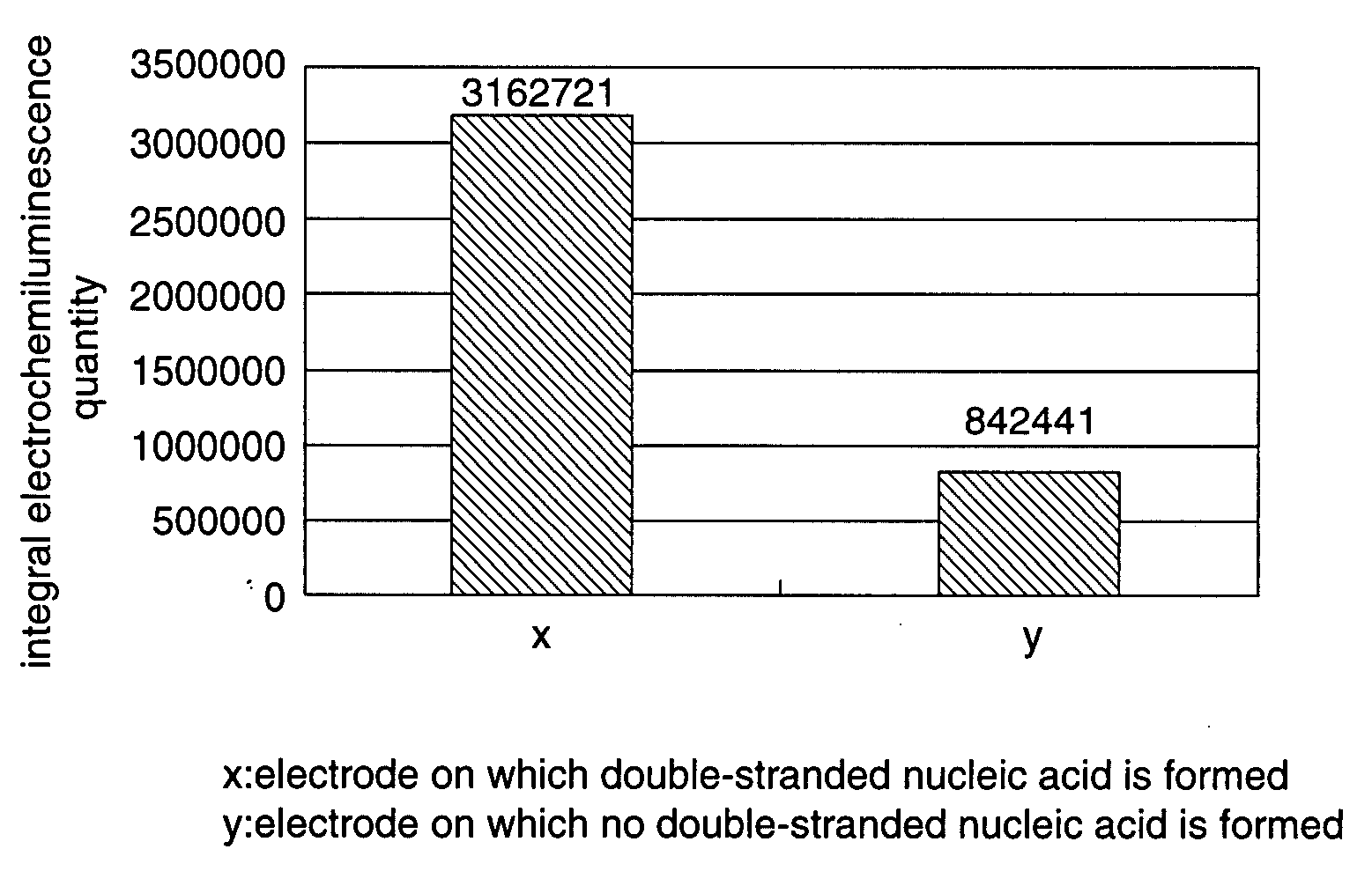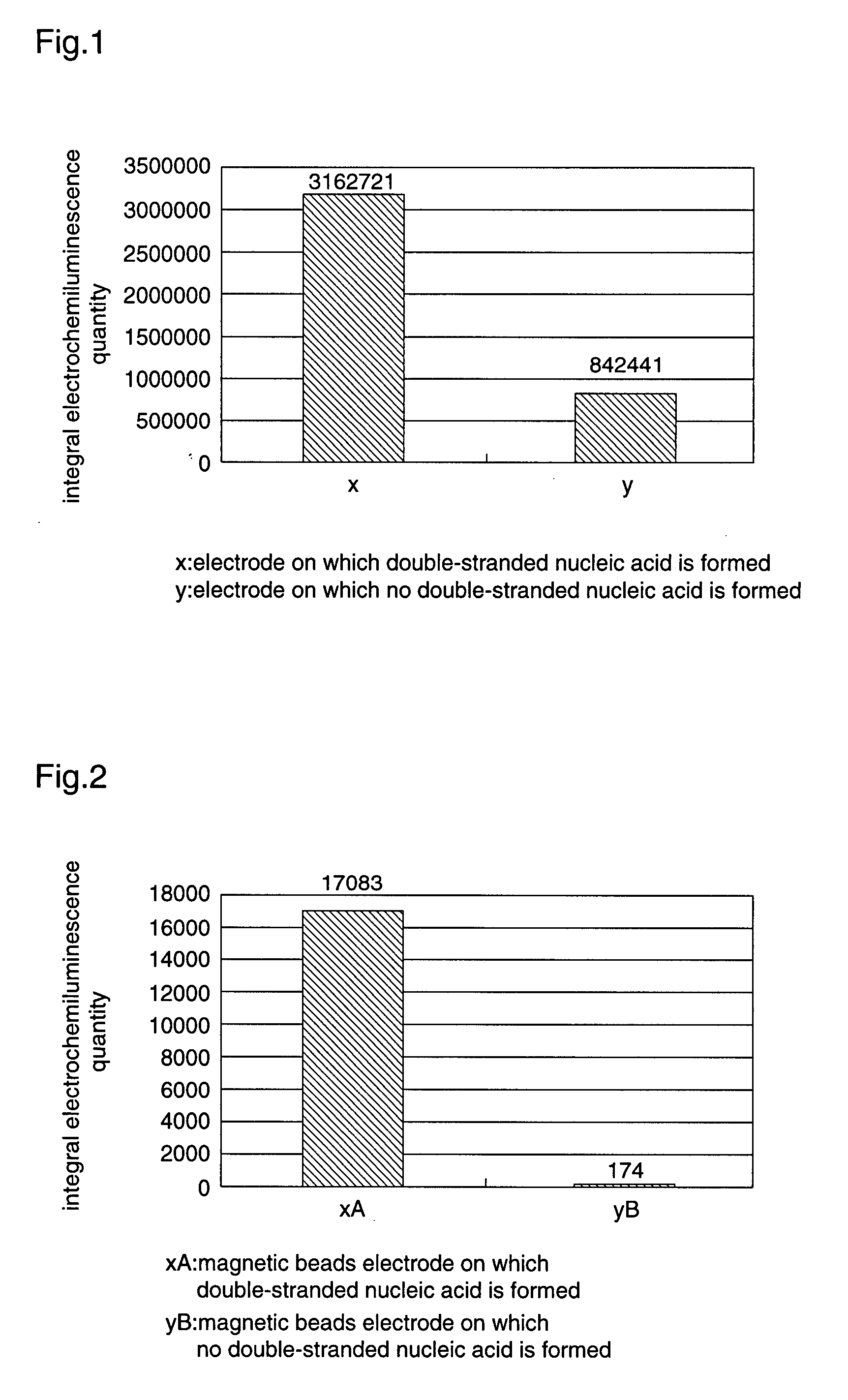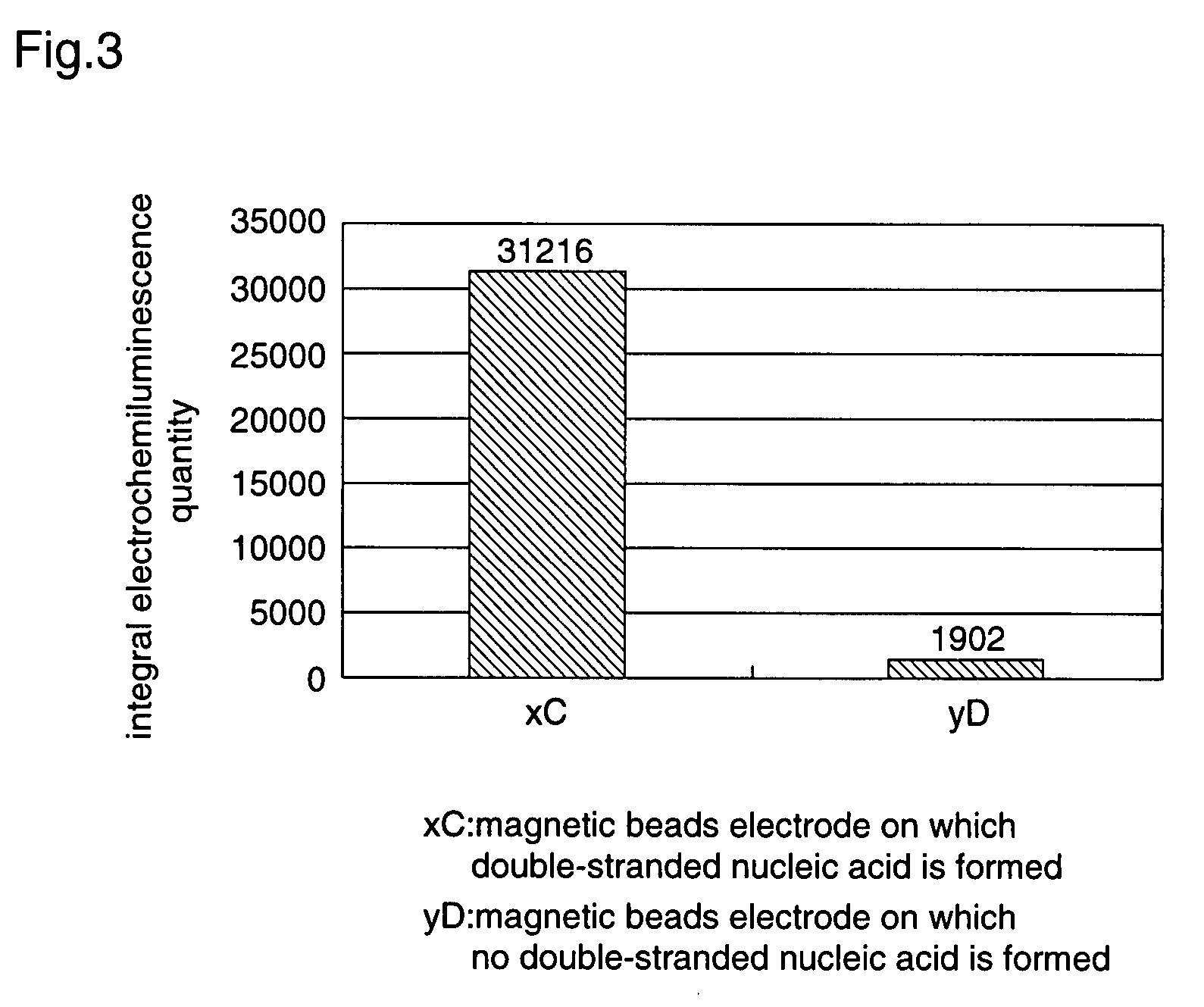Gene detection method
- Summary
- Abstract
- Description
- Claims
- Application Information
AI Technical Summary
Benefits of technology
Problems solved by technology
Method used
Image
Examples
embodiment 1
[0039]Hereinafter, a gene detection method according to a first embodiment will be described.
(Step 1)
[0040]Initially, a capture probe is formed. This capture probe has a sequence that is equal to a whole or a part of a sequence of a gene to be detected.
[0041]This capture probe may be a single-stranded nucleic acid obtained by chemical synthesis, or a nucleic acid which is obtained by cutting a nucleic acid extracted from a biologic sample with a restriction enzyme, and purifying the nucleic acid by separation due to electrophoresis or the like. In the case of using the nucleic acid extracted from the biologic sample, it is preferable to dissociate the nucleic acid into a single-stranded nucleic acid by thermal treatment or alkali treatment.
(Step 2)
[0042]Thereafter, the capture probe obtained as described above is immobilized to a solid phase. A solid phase used in the present invention is not particularly restricted, and examples of the solid phase include a noble metal such as gold...
embodiment 2
[0067]While in the first embodiment the electrochemically active substance is directly applied to the single-stranded gene sample to which the halogen compound is added, bonding between the electrochemically active substance and the single-stranded gene sample to which the halogen compound is added may be performed through a linker.
(Step 1)
[0068]Initially, a capture probe and a gene sample to be a detection target are formed. Since this process has been described in detail for the first embodiment, repeated description is not necessary.
(Step 2)
[0069]Next, a halogen compound is added to the gene sample. Since this process has also been described in detail for the first embodiment, repeated description is not necessary.
(Step 3)
[0070]Next, a linker is applied to the gene sample to which the halogen compound is added, thereby covalent bonding the single-stranded DNA with the linker.
[0071]This linker has a functional group that performs a nucleophilic substitution reaction with the halog...
example 1
[0096]Hereinafter, an example of the present invention will be described, but the present invention is not restricted thereto.
(1) Immobilization of Nucleic Acid Probe to Solid Phase Surface
[0097]A gold electrode is used as a solid phase. This gold electrode is prepared by depositing 200 nm thick gold with 10 nm thick titanium as a base layer, on a glass substrate, using a sputtering apparatus (SH-350 produced by UlVAC, Inc.), and then forming an electrode pattern in a photolithography process. Further, the electrode surface is washed for one minute with piranha solution (hydrogen peroxide:concentrated sulfuric acid=1:3), and rinsed with pure water, and then dried by nitrogen blow.
[0098]Employed as a capture probe is 30-base oligodeoxynucleotide which is modified with thiol group via 5′-terminal phosphate group, and has a sequence of AATTTGTTATGGGTTCCCGG GAAATAATCA (sequence number 1) from the 5′-terminal.
[0099]Then, the capture probe is dissolved in 10 mM of PBS (a sodium phosphate ...
PUM
| Property | Measurement | Unit |
|---|---|---|
| Electric potential / voltage | aaaaa | aaaaa |
| Chemical formula | aaaaa | aaaaa |
| Reduction potential | aaaaa | aaaaa |
Abstract
Description
Claims
Application Information
 Login to View More
Login to View More - R&D
- Intellectual Property
- Life Sciences
- Materials
- Tech Scout
- Unparalleled Data Quality
- Higher Quality Content
- 60% Fewer Hallucinations
Browse by: Latest US Patents, China's latest patents, Technical Efficacy Thesaurus, Application Domain, Technology Topic, Popular Technical Reports.
© 2025 PatSnap. All rights reserved.Legal|Privacy policy|Modern Slavery Act Transparency Statement|Sitemap|About US| Contact US: help@patsnap.com



